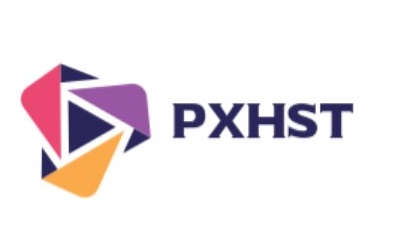In today’s interconnected digital landscape, the ability to share files seamlessly across different platforms and devices has become absolutely essential. Online file sharing software has revolutionized how we collaborate, work remotely, and manage digital assets. Whether you’re a small business owner, a creative professional, or part of a large enterprise, understanding the landscape of digital file sharing solutions can significantly impact your productivity and workflow efficiency.
Understanding Online File Sharing Software
Online file sharing software refers to cloud-based platforms that enable users to upload, store, and share digital files through internet connections. These sophisticated systems have evolved far beyond simple file storage, incorporating advanced features like real-time collaboration, version control, and comprehensive security protocols. The transformation from traditional physical media sharing to cloud-based solutions represents one of the most significant technological shifts in modern business operations.
The fundamental principle behind these platforms involves storing files on remote servers, making them accessible from anywhere with an internet connection. This accessibility has fundamentally changed how teams collaborate, eliminating geographical barriers and enabling 24/7 productivity cycles that were previously impossible with traditional file sharing methods.
Key Features of Modern File Sharing Platforms
Contemporary online file sharing software comes equipped with an impressive array of features designed to enhance user experience and productivity. Real-time synchronization ensures that all team members have access to the most current version of documents, preventing the confusion and inefficiency associated with multiple file versions.
Advanced collaboration tools allow multiple users to edit documents simultaneously, with changes tracked and attributed to specific contributors. This functionality has proven invaluable for teams working on complex projects requiring input from various stakeholders. Version history features enable users to revert to previous iterations of files, providing a safety net against accidental deletions or unwanted modifications.
Security features have become increasingly sophisticated, incorporating end-to-end encryption, two-factor authentication, and granular permission settings. These security measures ensure that sensitive information remains protected while still enabling efficient collaboration among authorized users.
Integration Capabilities
Modern file sharing platforms excel in their ability to integrate with existing software ecosystems. Popular platforms seamlessly connect with productivity suites, project management tools, and communication applications, creating unified workflows that minimize the need to switch between different applications constantly.
Benefits for Different User Categories
The advantages of online file sharing software vary significantly depending on the user’s specific needs and circumstances. For individual users, these platforms provide convenient access to personal files from multiple devices, automatic backup capabilities, and the ability to share large files that would be impossible to send via traditional email attachments.
Small businesses benefit from cost-effective storage solutions that scale with their growth, eliminating the need for expensive on-premises server infrastructure. The collaborative features enable small teams to work more efficiently, while professional-grade security features protect valuable business data without requiring dedicated IT personnel.
Large enterprises leverage these platforms for their robust administrative controls, compliance features, and ability to handle massive volumes of data. Advanced analytics and reporting capabilities provide insights into usage patterns and collaboration effectiveness, enabling data-driven decisions about workflow optimization.
Educational Institutions
Educational institutions have found online file sharing software particularly valuable for facilitating distance learning and collaborative research projects. Students and faculty can easily share resources, submit assignments, and collaborate on research initiatives regardless of physical location.
Security Considerations and Best Practices
While online file sharing offers numerous advantages, security remains a paramount concern for users handling sensitive information. Understanding the security features offered by different platforms is crucial for making informed decisions about which solution best meets your needs.
Encryption protocols vary between platforms, with some offering client-side encryption where files are encrypted before leaving your device, while others encrypt files on their servers. The distinction is important for organizations with strict compliance requirements or those handling highly sensitive data.
Access controls allow administrators to define who can view, edit, or share specific files or folders. Granular permission settings enable fine-tuned control over collaborative access, ensuring that team members have appropriate access levels without compromising security.
Regular security audits and compliance certifications from reputable third-party organizations provide additional assurance that platforms maintain high security standards. Users should prioritize platforms that undergo regular security assessments and maintain transparency about their security practices.
Popular Online File Sharing Solutions
The market offers numerous file sharing solutions, each with unique strengths and target audiences. Cloud storage giants have established themselves as reliable options for both personal and business use, offering generous storage capacities and robust feature sets.
Specialized business-focused platforms often provide enhanced administrative controls, advanced collaboration features, and industry-specific compliance capabilities. These solutions typically command higher prices but offer additional value for organizations with complex requirements.
Open-source alternatives provide cost-effective solutions for technically savvy users who prefer greater control over their data and infrastructure. These platforms often require more technical expertise to implement and maintain but offer unparalleled customization possibilities.
Emerging Trends in File Sharing Technology
Artificial intelligence integration is beginning to transform file sharing platforms, with smart categorization, automated workflows, and predictive analytics becoming increasingly common. These AI-powered features help users organize their files more efficiently and identify collaboration opportunities they might otherwise miss.
Choosing the Right Platform for Your Needs
Selecting the optimal online file sharing software requires careful consideration of multiple factors. Storage capacity requirements, collaboration feature needs, security standards, and budget constraints all play crucial roles in the decision-making process.
Organizations should evaluate their current workflow patterns and identify specific pain points that file sharing software could address. Understanding team size, geographic distribution, and collaboration frequency helps narrow down the most suitable options.
Trial periods offered by most platforms provide valuable opportunities to test functionality and user experience before committing to long-term subscriptions. During trial periods, focus on testing the features most critical to your specific use cases rather than exploring every available feature.
Implementation and Adoption Strategies
Successful implementation of online file sharing software requires thoughtful planning and change management. Organizations should develop clear migration strategies for existing files, establish naming conventions and folder structures, and provide comprehensive training for all users.
Gradual rollout approaches often prove more successful than immediate full-scale implementations. Starting with pilot groups allows organizations to identify and address potential issues before wider deployment, ensuring smoother adoption across the entire organization.
User training should emphasize not just how to use the platform’s features, but also best practices for file organization, collaboration etiquette, and security protocols. Well-trained users are more likely to fully utilize the platform’s capabilities and maintain good digital hygiene practices.
Future Outlook for File Sharing Technology
The future of online file sharing software promises even greater integration with emerging technologies. Blockchain technology may provide enhanced security and transparency for file sharing transactions, while improved AI capabilities will likely offer more sophisticated automation and intelligence features.
As remote work becomes increasingly prevalent, file sharing platforms will continue evolving to support more complex collaborative workflows and provide richer communication features. The integration of virtual and augmented reality technologies may eventually transform how users interact with shared files and collaborate in digital spaces.
The ongoing development of 5G networks and edge computing will likely improve the speed and reliability of file sharing operations, making real-time collaboration even more seamless and enabling new use cases that are currently limited by bandwidth constraints.
Environmental considerations are also driving innovation in file sharing technology, with providers increasingly focusing on energy-efficient data centers and sustainable practices. Users are becoming more conscious of the environmental impact of their digital activities, creating demand for eco-friendly file sharing solutions.
Conclusion
Online file sharing software has become an indispensable tool in our digital-first world, enabling collaboration and productivity that would have been unimaginable just a few decades ago. The continued evolution of these platforms promises even greater capabilities and integration possibilities, making them increasingly central to how we work, learn, and create together. By understanding the features, benefits, and considerations associated with different file sharing solutions, users can make informed decisions that enhance their digital workflows and unlock new possibilities for collaboration and innovation.

